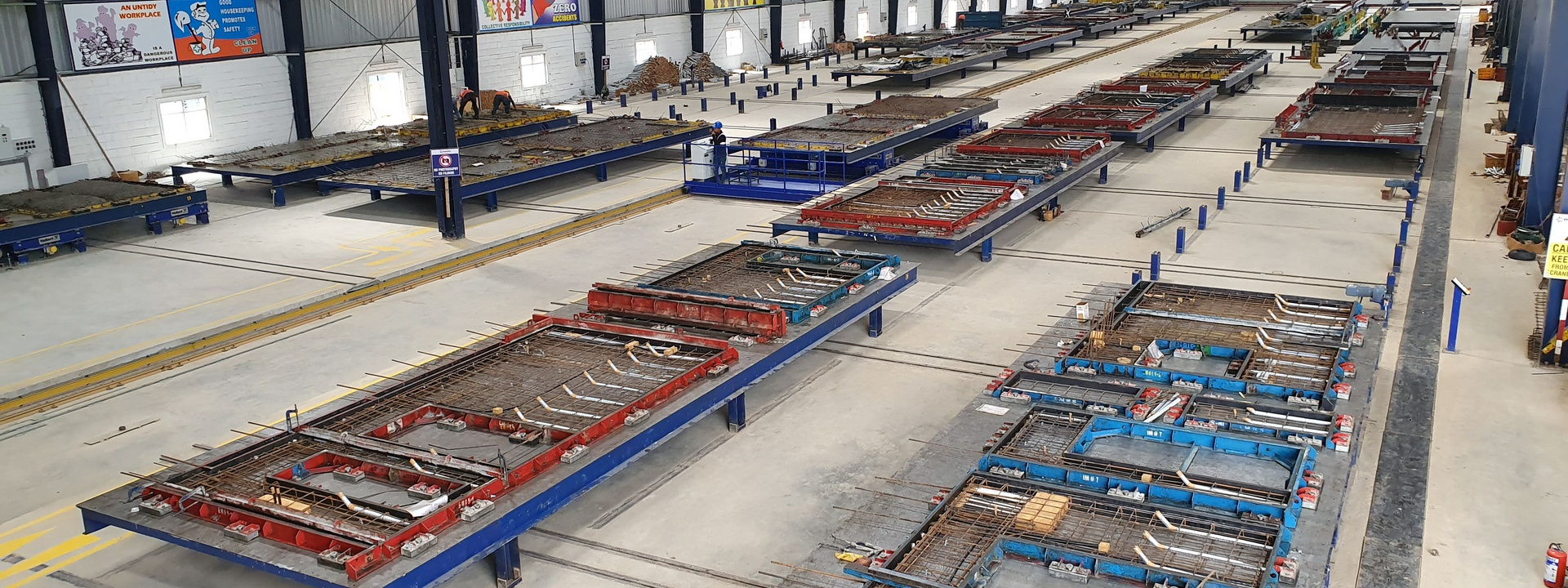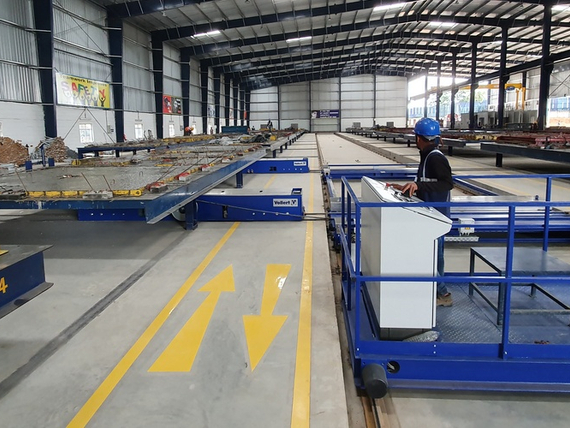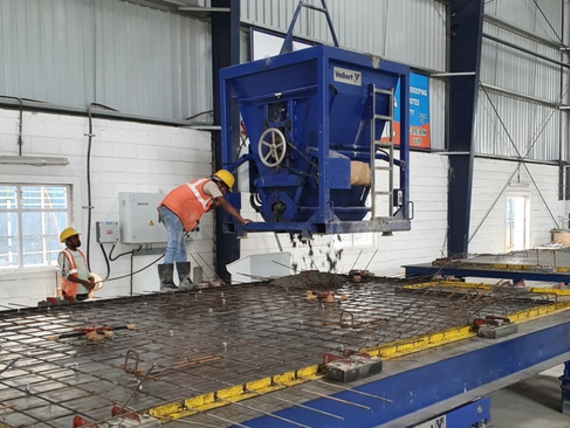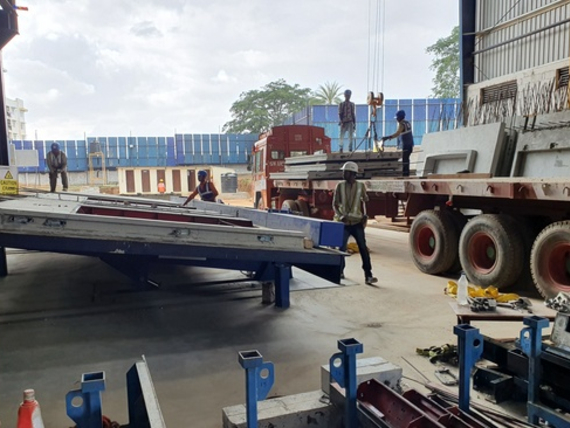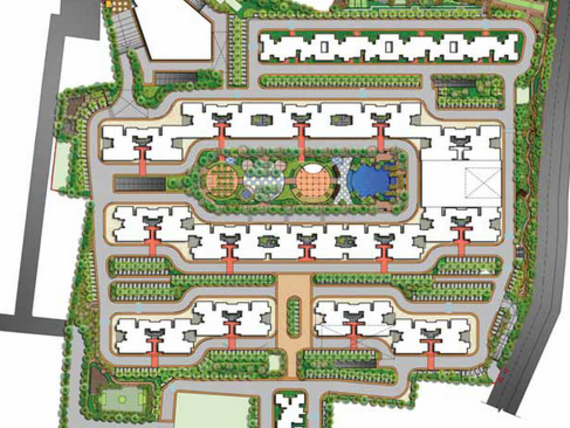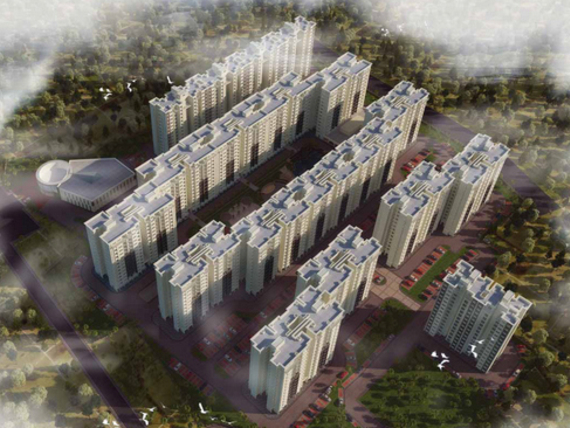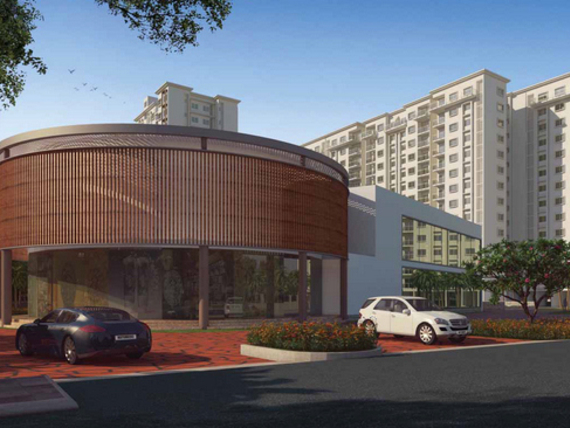Starworth Infrastructure and Construction (SICL) was conceived in 2001 as an internal construction and development service provider for the Indian Puravankara Group. In the early years, the company realised some of Bangalore's most famous construction projects such as the Purva Riviera and Purva Venezia. In order to take on external construction contracts and to act as a back-end service provider for the Puravankara Group, SICL was spun off as an independent construction company in 2009.
Having specialised and highly experienced in the traditional cast in-situ construction method for almost 20 years, with almost all construction progress taking place directly on site, Starworth 2018 was faced with a fundamental reorientation of the construction system. "The industrial pre-production of precast concrete elements is now the practice in all leading industrialised countries. With this construction system, which is still relatively new for India, one can achieve real quantum leaps in terms of architecture, construction quality, cost efficiency and the time factor," explains Raj Pillai, Managing Director at SICL. "The Provident Park Square construction project in the heart of Bangalore, initiated in 2018, was the starting signal for Starworth to rely completely on this construction technology for the first time." India is currently taking major steps to introduce this global standard in construction technology. The government's "Housing for all by 2022" project requires affordable housing that can be built quickly.
Provident Park Square as lighthouse construction project in India
"Provident Park Square is an exclusive residential project located in the prime area of Judicial Layout on Kanakapura Road in Bangalore," says Raj Pillai. "Park Square extends over 20 hectares, has excellent transportation links and consists of several residential building complexes with appartments from 517 sqf. to 1,300 sqf. and luxurious in-home features. It is the ideal choice for families and singles who are looking for a high quality of living and at the same time a luxurious living experience." A luxury clubhouse, a shopping mall, cafés, children's playgrounds as well as attractive sports facilities such as tennis, cricket and futsal courts and many green parking areas make Park Square truly exemplary for a new urban architecture in India. This stems from Starworth's vision to offer modern, high quality living space in an exclusive ambience to the Indian families of today. Already today, almost 2 years before the completion of the building, all apartments are completely sold.
"From the very beginning it was clear that Park Square could not be realised with traditional building methods. We wanted to make the construction periods transparent and plannable and thus realize the project in 2-3 years," says Raj Pillai. Thanks to industrialised processes, the precast construction technology not only allows construction defects to be minimised but construction costs to be significantly reduced. More importantly, the construction times are shortened considerably. "To get an idea for the building speed: One floor has 8 apartments and consists of 210 to 220 individual components. With a production and crane capacity of 150 to 200 walls and floor slabs per day, floor cycle times of 3 to 5 days can be achieved - with conventional construction methods, 10 to 15 days are required," describes Christoph Müller-Bernhardt, Executive Sales Director India at Vollert. But the architecture of Provident Park Square was also supposed to be extraordinary and special. "We work with the Building Information Modelling (BIM) planning method to achieve this," describes Raj Pillai. The 16+ residential building complexes in Provident Park Square will initially be created virtually in 3D. All important data of the walls and slabs to be produced then flow directly into the production engineering processes as well as into the preliminary planning of the construction site processes. In addition, the BIM construction details are accessible at all times on a digital data platform for architects, structural engineers or electrical engineers.
Vollert's "on-site" CSP concept convinced
The return-on-invest should be achieved in a relatively short time. But also the proximity to the construction site was very important already in the preliminary planning phase in order to keep the transport distances for the construction project short and to minimize delays due to the weather, for example. At the same time, the plant layout should be expandable for higher capacities and the option should be available to relocate the complete plant technology to another city for the next residential project after project completion.
With the German concrete plant specialist Vollert, an experienced technology partner was chosen after intensive discussions. "The chemistry was right from the start," says Christoph Müller-Bernhardt from Vollert. "Highly professional and extremely motivated, we planned the plant concept with an annual capacity of 300,000 m2 of solid concrete elements and special parts such as columns and stairs in close dialogue with Starworth. Various production technology concepts such as a purely stationary tilting table production or battery moulds were discussed, and the advantages and disadvantages weighed up. "Technology 'made in Germany' is definitely no longer a vision of the future for India" explains Daniel Borchardt, the responsible Project Manager at Vollert. Here, plant suppliers offer novel concepts in which state-of-the-art machine solutions can be combined with different degrees of automation. "At Starworth, we decided on the Central Shifter Plant (CSP) concept from Vollert," says Daniel Borchardt. A VArio SHIFT central shifter platform is the heart of the system and makes the plant processes as flexible as possible. It combines the advantages of the circulation principle with those of a stationary production line. Individual work processes such as time-consuming reinforcement operations, concreting or curing times of varying lengths are carried out independently of each other. Even differently reinforced and complex precast concrete parts can be produced in parallel. The central shifter platform transports the shuttering pallet over a travel length of 110 m along the longitudinal side to the circulation position where it is needed at any given time. Cross-lifting trucks then move it to 8 transfer positions, either crosswise to the left or right to the respective processing station. This means that there are no downtimes or waiting times, and everything runs completely independently of the cycle time. There are also several buffer places for the intermediate storage of semi-finished walls or floor slabs.
In the first expansion stage, Starworth is relying on a semi-automated concept. The 22 shuttering pallets, produced at Vollert India in Sikandrabad, are in 2-shift operation in permanent circulation between the 32 cleaning, reinforcement, concreting, curing and buffer stations. Up to 500 m2 wall and slab elements can be produced per shift. Up to 200 mm thick solid concrete elements as well as architecturally special facade elements are produced in parallel. After manual positioning of the shuttering profiles, the reinforcement grids and built-in parts, the concrete required is precisely applied by means of a crane-guided, electrically operated concrete dosing bucket. A SMART COMPACT vibrating station compacts the concrete at low frequency via 10 synchronized external vibrators. After the curing process on an intermediate buffer station, the central shifter platform moves the finished wall or slab element to the final loading position. Vertical lifting of the solid concrete elements is carried out by a VArio TILT high-performance tilting station. This takes place up to a maximum tipping angle of 80°. A hydraulically movable support beam travels against the precast concrete element and thus prevents slippage during the tipping operation. Loading takes place directly into transport racks.
2nd expansion stage in the preliminary planning
"All transport, production and loading processes are controlled decentrally, which enables a manageable investment budget," explains Christoph Müller-Bernhardt. "This will also be the case for the 2nd expansion stage." In the pre-planning phase, additional plant components and a higher degree of automation have already been provided for in order to be prepared for necessary capacity increases. A curing chamber with two rack towers will provide curing space for up to 20 pallets. These will be supplied by a stationary VArio STORE storage and retrieval machine. A large plotter for colour pre-marking of the shuttering profiles or built-in parts as well as a VArio SMOOTH trowel for improved surface treatment of the solid concrete parts are also planned for the further expansion phase.
"Already today, 6 months after the commissioning phase and the first walls and slabs produced, the construction progress for the Provident Park Square construction project is above the planned figures," sums up Raj Pillai from Starworth. "The new construction system has convinced us. With Vollert as our know-how and technology partner, we have developed a sustainable and future-proof construction system. This means that the costs are 15 to 20% lower than conventional construction methods, even if the initial investment costs appear high. We get dimensionally stable slabs and walls and have shorter construction times," says Raj Pillai. "In addition, the CO2 footprint is reduced by 25% and water consumption by 50%. The residential buildings have excellent thermal performance, are weather and fire resistant and even earthquake-proof."

